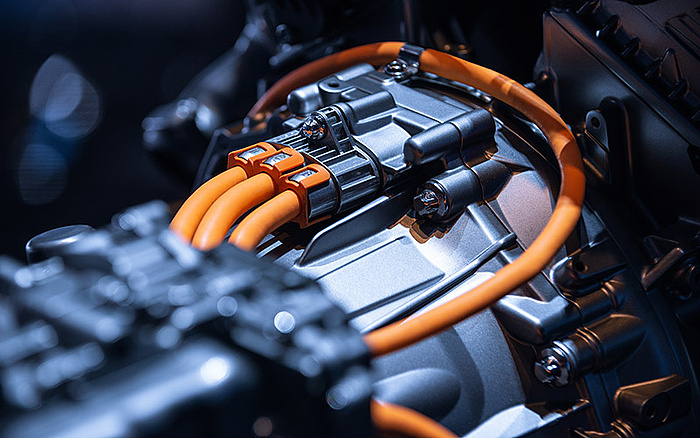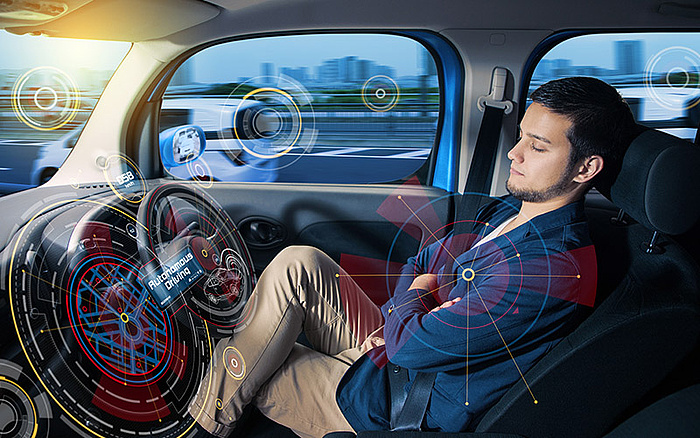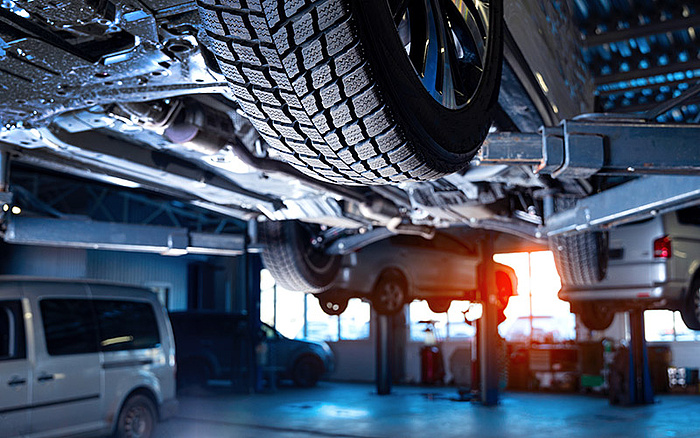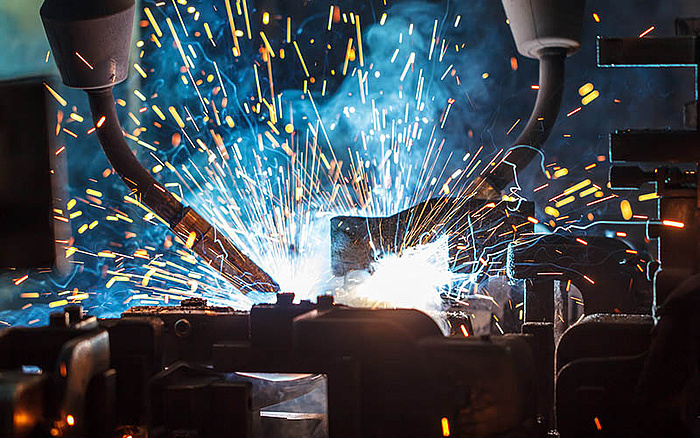
Driving the future: innovations steering the automotive industry
The Intellectual Property (IP) scene is a complex environment, globe-spanning, deeply intricate and ever in motion. Tracking and analyzing topics in this field is vital for the success of commercial and research endeavors the world over, which was why the Dennemeyer Group established the annual IP Trend Monitor survey in cooperation with CTC Legal Media.
The 2023 edition of the survey collected over 1,800 answers and opinions from a diverse range of IP experts, including lawyers, consultants, scientists and other practitioners working at organizations ranging from large corporations and law firms to medium-sized enterprises and IP offices. The focus was on eight pivotal industries that are experiencing the effects of disruptive technologies while simultaneously responding to ecological and social commitments.

Here, we explore some of the data related to the automotive industry, reflecting on how the top international filers are pursuing diverse patent portfolios that span electric vehicles (EVs), autonomy, safety and connectivity. Defensive patents safeguard their R&D investment, while standard-essential patents set and cover industry standards. On a commercial front, strategic partnerships and monetization strategies, including licensing and sales, enhance revenue.
Where the technological rubber meets the road
Survey respondents were asked to rank various technologies according to their effect on the automotive industry in the next five years, focusing on propulsion, safety and user experience.
Advanced batteries
With EVs becoming increasingly prevalent on public roads and already ascendant in promotional material, it is no surprise that respondents to the IP Trend Monitor identified advanced and solid-state batteries as a priority. Innovations in battery design, energy storage materials (such as lithium-ion and solid-state electrolytes), electric chargers and, relatedly, EV drivetrains all contribute to increasingly affordable and efficient alternatives to internal combustion engines.
An impressive 85% indicated that emergent battery designs will be either the most or second-most impactful technology for the automotive sector. Additionally, 63% of those polled believed that the rise of EVs will foster greater collaboration between automakers and technology firms, and 62% said it will drive increased patenting in energy storage. This confidence corresponds with the industry's increase in patent applications for electric batteries, chargers and vehicles from 12,235 in 2000 to 63,158 in 2020.

The transition from internal combustion engines to hybrid and all-electric methods requires the development not only of new energy storage solutions but also more powerful and efficient electric motors.
Though 2020's total number of applications represents a slight decrease from a high of 66,978 the previous year, this dip likely reflects the maturation of innovative concepts to commercial readiness and may soon be reversed. We are already seeing the fruits of considerable research into improved electrode materials, higher energy densities, enhanced safety features, faster charging capabilities and optimized power management systems. Additional developments in battery management systems (BMS), thermal management solutions and vehicle-to-grid (V2G) integration will likely play crucial roles in upgrading the performance of EVs. If it has not already, direct competition will spark advances in all of these fields of study as major players jostle for position in the marketplace.
Besides the pursuit of cleaner air, driving factors in this arena include government initiatives promoting EVs and consumer demand for sustainable transportation solutions. The strategic management of IP rights is thus imperative for companies seeking to gain a foothold in the burgeoning EV market, ensuring they remain at the forefront of innovation while navigating the complexities of global rivalries and regulatory frameworks.
Autonomous driving
The concerted effort of governments, agencies and manufacturers to phase out new cars with internal combustion engines means the uptake of EVs will only gather pace over the coming years – a situation with its own technical ramifications. In light of this transition, 46% of respondents predict a greater focus on IP covering "smarter" vehicles, namely advances in software and artificial intelligence (AI).
Moreover, the pace of transformation in the automotive sector could be accelerated further by such digital solutions. Chief among them are the long-awaited autonomous and semi-autonomous driving systems that have managed to remain tantalizingly feasible and frustratingly elusive. It seems the former state is finally gaining ground, but not without new practical and legal hurdles resulting from the use of real-time sensor data from light detection and ranging (LiDAR), radar, cameras, GPS and inertial measurement units (IMUs). Thus, it is perhaps due to a healthy dose of skepticism that only 56% of law firms ranked autonomous driving as a developmental priority, whereas that number jumped to 71% among other respondents.
Vehicle-to-everything (V2X) communication and subscription-based features
V2X communication enables vehicles to exchange data with traffic control systems, infrastructure, other vehicles and, via mobile devices, even pedestrians. Using technologies such as dedicated short-range communication (DSRC), Wi-Fi and 5G connectivity, this framework allows vehicles to relay their position, velocity and status to optimize traffic flow, enhance safety and provide personalized services to drivers and passengers.

The ultimate dream of personal transportation may soon be a reality. With the ability to collect and process far more navigational data, self-driving cars could be even safer than their manual counterparts.
Despite these potential benefits, much less enthusiasm was expressed for V2X communication. Only a third of panelists ranked the system as a priority despite, or possibly because of, its overlap with AI implementation.
More strikingly, a mere 14% of patent specialists and 10% of trademark specialists gave paying to access factory-built features top ranking. Such locked add-ons include more powerful acceleration, higher top speeds and heated seats.
Industry examples and market trends
Using the results of the IP Trend Monitor survey for context, it is possible to draw a clearer picture of the challenges that will need to be overcome in the near future.
Supercharging electric propulsion
The automotive industry has already acknowledged the limitations of lithium-ion batteries in terms of energy density, efficiency and charging speed, compelling manufacturers to invest heavily in alternatives such as solid-state batteries. However, for these to achieve mass-market penetration, unit capacity would have to scale to hundreds of megawatt-hours and, subsequently, many gigawatt-hours while reducing production costs.
In the meantime, a 2022 study by the McKinsey Battery Insights team determined that the lithium-ion market could grow more than 30% a year until 2030. With the backing of established manufacturers Ford, BMW and Volkswagen, research companies QuantumScape and Solid Power are committed to producing one million lithium-ion units annually. Consequently, the next few years will see a race between competing technologies, partnerships and automakers.
The fact that lithium carbonate prices at the start of 2023 stood at six times the 2015-2020 average suggests the industry will have to approach this next phase with multiple solutions simultaneously. As an example, sodium-ion batteries have emerged as an alternative that could prove viable for urban uses, where lower storage capacity is not a concern.
The law in the driving seat
McKinsey & Company also projects the autonomous driving market could generate up to $400 billion USD in revenue by 2035. Nevertheless, before that level of success can be reached, confusion surrounding accident liability must be ironed out.
Some countries, such as Germany, already have a multi-part liability system, apportioning partial or total responsibility to the driver / supervisor, owner or manufacturer depending on the nature of the incident. However, this is far from a simple solution, as degrees of automation vary with the particular vehicle and even the mode of operation. The United Kingdom, on the other hand, is seeking a more straightforward legal equation for assigning liability, wherein "[e]very authorised self-driving vehicle will have a corresponding Authorised Self-Driving Entity – often the manufacturer – which will be responsible for the behaviour of the vehicle when self-driving."

Working out how to apportion blame lies when autonomous driving vehicles go wrong is a critical step on the road to wide adoption. Until then, issues of insurance and criminal responsibility will be hotly negotiated.
Debates will doubtlessly continue as regional and national laws adapt, with the resulting legislation influencing how developers pursue their IP strategies.
Data security and spending habits
Though implementation has been relatively slow thus far, research by The Brainy Insights suggests the global V2X market will grow at a compound annual growth rate of 40% from 2023 to 2032, with promising safety applications of Connected V2X and vehicle-to-vehicle communication already coming to light. Of course, just as with autonomous driving, these benefits do not come without complications. Significant obstacles can be found in the infrastructural investment required and lingering privacy issues.
Subscription-based features may not come with as many practical, legal and IP challenges, yet they still face an uphill struggle for customer awareness. While 41% of car shoppers in a study by Cox Automotive indicated their interest in "Features on Demand," only 21% were familiar with the general concept.
Moving forward, manufacturers will have to consider the reasons customers may not wish to purchase subscriptions to make full use of a product they already own. Price will certainly remain a dominant factor, but with 23% of respondents to an S&P Global Mobility survey saying they do not understand the value of such services and 8% having security concerns, it is clear that vendors can improve adoption rates through more targeted communication strategies.
International comparison of patent filing strategies
The automotive industry is dominated by a relatively small number of very large players that own multiple brands. Nonetheless, their patent filing strategies can vary based on factors such as regional regulations, local market dynamics, technological strengths and cultural differences.
European automotive companies prioritize environmental sustainability and safety innovations, as reflected in their focus on energy efficiency, emissions reduction and advanced protective features. Additionally, they foster collaboration with research institutions and universities, leveraging academic expertise to develop cutting-edge technologies and maintain competitiveness.
Across the Atlantic, automotive companies in the United States, and more specifically in Silicon Valley, have led in autonomous driving research, resulting in numerous patents in this field. They also favor the development of connected car technologies to improve safety and convenience. Furthermore, U.S. automakers embrace agile methodologies and disruptive business models, leading to patents in emerging areas like mobility services and ride-sharing platforms.
Turning to Asia, Chinese automotive companies are seeing rapid growth in EVs, with extensive patent filings covering batteries, electric motors and charging infrastructure, driven by government incentives. Moreover, these favorable government policies support inventive activity in new mobility solutions like shared services and autonomous driving, as witnessed by the abundance of patents in these emerging areas.

As a highly globalized market, it is easy to overlook the regional preferences of the automotive industry. Consumer demand strongly influences the innovation priorities of major production centers.
Korean firms, on the other hand, tend to focus on consumer electronics integration, incorporating systems from companies like Samsung for advanced infotainment and connectivity. In addition to this, these companies often invest in hydrogen fuel cell technology, seeking alternatives to traditional engines and battery EVs, resulting in patents for fuel cell systems and their supportive infrastructure.
Finally, Japan is another major exporter of cars, with its own observable preferences. Automotive companies in this country excel in hybrid and EV technology, emphasizing battery reliability and refinement. To this end, Japanese automakers seek R&D partnerships in collaboration with suppliers and educational institutions.
While there may be some commonalities in patent filing strategies across regions, differences between market priorities, technological expertise and regulatory environments have produced distinct approaches from automotive companies headquartered in Europe, the United States, China, the Republic of Korea and Japan.
What next for the industry?
Never since the dawn of production-line manufacturing has the transformation of the automotive industry seemed so inevitable or progressed so rapidly, spurred by evolving technologies and shifting consumer demands. From the race for advanced batteries to the complexities of autonomous driving and the potential revolution of subscription-based features, the way we travel is truly turning a corner.
Amid these rapid shifts, a key guarantor of sustained progress is the pursuit, acquisition and enforcement of IP rights. As groundbreaking technologies reshape the marketplace, the strategic protection of innovations and brand identities remains paramount.
The IP Trend Monitor 2023 comprehensive report delves into these critical strategies, offering expert projections and opinions from IP industry practitioners.
Filed in

Take an in-depth look at medical devices and how IP will foster, inform and protect more innovative healthcare experiences.



